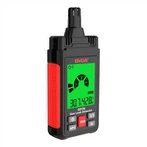Creating a soldering iron head with a tinning and soldering tip
1 come up with ideas
Through the observation and actual use of the existing electric soldering irons on the market, it is found that
The reason why the twisted wires cannot be effectively tinned is that the commonly used electric soldering iron mainly
To be used for soldering of electrical components, the shape of the tip of the soldering iron used is basically
Pointed, straight, knife, etc. Such a soldering iron tip can
The traditional ability to quickly concentrate the heat generated by the heating element of the electric soldering iron adds to the need
The hot soldering point reduces the contact time between the soldering iron and the soldered components, which is convenient
It is suitable for rapid tin melting and soldering to avoid damage to components caused by overheating.
However, when using such an electric soldering iron for soldering operation, due to the shape of the soldering iron tip
shape limit, when the soldering iron tip is placed on the twisted part of the wire to heat, the electric soldering iron tip
The contact with the stranded conductor is in most cases only a point contact, the contact surface
Too small to quickly transfer the heat of the soldering iron tip to the required tinning treatment
The surface of the wire, so that the molten solder cannot fully and effectively penetrate into the stranded wire
Clearance.
In view of the small contact surface between the soldering iron tip and the stranded wire, which affects the heat quickly
The problem of efficient transfer, according to the temperature difference that restricts heat conduction, the contact surface
area, contact time and other related factors, the author preliminarily proposed that by increasing the contact surface
Actively improve the idea of heat transfer. The specific idea is to add a longitudinal groove on the connecting rod of the soldering iron tip without changing the soldering function of the original soldering iron tip.
Increase the contact surface between the soldering iron and the stranded wire. In order to better match with stranded conductors
For proper use, the shape of the longitudinal groove needs to be made into an arc shape. such an arc
The shaped groove can not only greatly increase the connection between the heating part of the electric soldering iron and the stranded wire
The contact area is more convenient and effective for tin melting and hot tin operation.
2 physical modification
In order to realize the above-mentioned conceived scheme, considering that it is necessary to open the
out of the groove without affecting the mechanical strength of the connecting rod, the author uses a round file
The distance between the connecting rods of the pointed soldering irons with a connecting rod diameter of 4mm that is common on the market
File about 4mm in diameter longitudinally at about 6mm away from the tip of the soldering iron, and about 1mm in depth
arc-shaped grooves.
One way of slotting is horizontal along the longitudinal direction of the tip rod axis
Grooving, this way of transformation is easier to achieve. another way
The formula is to slot circularly along the longitudinal direction of the connecting rod axis of the soldering iron tip,
This transformation process is relatively time-consuming and difficult. It can be seen from the processed electric soldering iron head that due to the existence of arc-shaped grooves,
At present, the contact between the stranded wire and the tip of the soldering iron changes from point contact to line contact,
The contact surface between the two is greatly increased, the heat transfer effect is enhanced, and the heating time is shortened.
time.






